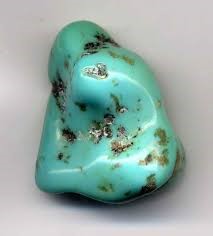The inspiration for this post came from discovering a handful of ebay product postings of “red Lemurian” seed crystals. I placed “red Lemurian” in quotes, because the crystals pictured in the ad were certainly NOT real Red Lemurians. They were indeed Lemurian crystals, but they had been dyed to look red.
For those of you who have been following my posts and watching my videos, will probably be able to see in the picture that the crystals exhibit the physical attributes of true Lemurian seed crystals, but by observing the color coating, you can tell they have been dipped in a vat of dye by the translucent sheen that perfectly coats them. This is NOT NATURAL, and unfortunately typical of the trend to prostitute crystals of a different sort under the guise of another. Below is a picture of true red Lemurians, and you can clearly see the difference.


Dyed “Red Lemurians” An Authentic Red Lemurian
Since I’m on the topic of false advertising, here are a few other crystals to be careful about. TURQUOISE is by far the most easily fraudulently represented stone. Real turquoise is getting to be exceedingly scarce as it is being mined out. The most expensive turquoise is from the Sleeping Beauty Mine in South Africa, but it is almost impossible to come by these days. It’s most striking characteristic is its aqua, almost electric blue vibrant color. North American turquoise has the characteristic darker veins and a more muted color, whereas Mexican Turquoise has a blue-greenish hue.
What you will find on most shelves and in most stores, especially bead stores, are either dyed Howlite, which is a soft white stone with dark black-brown veins that looks a lot like turquoise, or Variscite, which is abundant in the American Northwest. It too has veins, but they are usually grey and look more like roots. The color of Variscite is typically grey-green. But be warned. I’ve seen many an expensive “turquoise” pendant that is in fact glamorized Variscite.



Dyed Howlite Natural Howlite Variscite
Real Turquoise Real Turquoise
Why is it important to spot the difference? Two reasons. The first, is you don’t want to overpay for a stone that is incorrectly labeled and valued. Second, and more important, Turquoise has unique healing powers. It is a stone of protection and purification and helps to connect with ancestral energies and wisdom. This isn’t to say that Howlite and Variscite don’t have healing energies. They do, but their energies are more specific and effective in combination with other stones, and they don’t possess the healing properties and functionality that Turquoise is prized for.
Another common imposter is “sunstone.” More and more I come across a bin of synthetic sunstone along with other real tumbled stones. It is opaque and glittery, and emits no healing energy. True sunstone is always translucent, with an uneven distribution of orange-red coloring that sparkles when light refracts in it. The sparkling comes from the presence of other minerals in the quartz. The clearer it is, the higher the quality, and the stronger the energy.



Synthetic Sunstone B Grade Real Sunstone A Grade Real Sunstone
A few other stone imposters to look out for are synthetic jade, and my favorite, dyed agate. No, I’m afraid there are no naturally occurring pink or bright green agates out there. And for that matter, I’ve seen Howlite dyed a whole spectrum of colors. These are for novelty, and any serious crystal healer might only consider their use in conjunction with color therapy. Agates, after all, are very impressionable stones and can be imprinted with other energies easily, but I cannot vouch for the viability of dyed agates being used in this way because I have not experimented with this.
The only thing synthetic stones are good for is looking pretty. If that is your desire, be my guest. But I’m a purist, and love the real thing, for the genuine quality, and for the benefit of the natural crystal’s energy.
So the next time you find yourself eyeing a nice crystal or gemstone, remember to look for the physical characteristics to discern the authentic stone from the prostituted stone masquerading for the real thing. If you do spot an imposter, send it love, for it is not the stone’s fault! The ruse may have been caused by ignorance, as opposed to intentional subterfuge.
If you would like to learn more about determining the authenticity of a crystal, check out my posts on feeling the energy of crystals, techniques for choosing the right crystal to work with, and the differences and similarities between amethyst and citrine, and the guide to other semi-manufactured crystals.
Also, be sure to sign up for exclusive access to all my content including more writing, teaching, meditations, and videos on my website.


